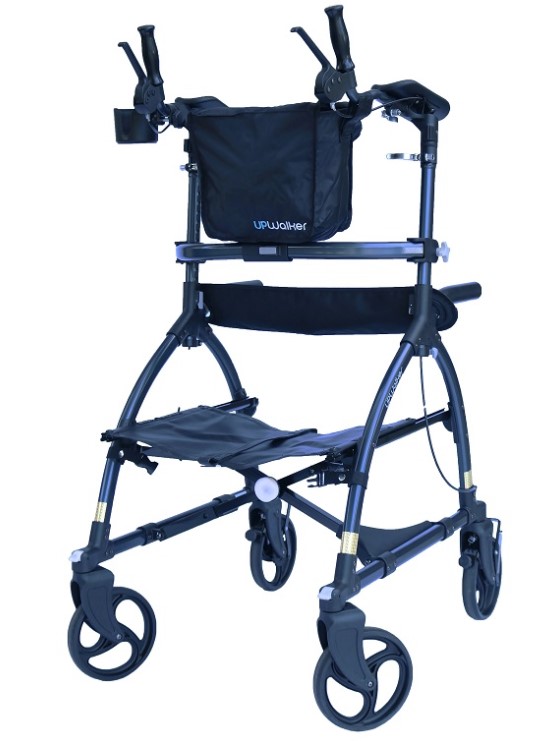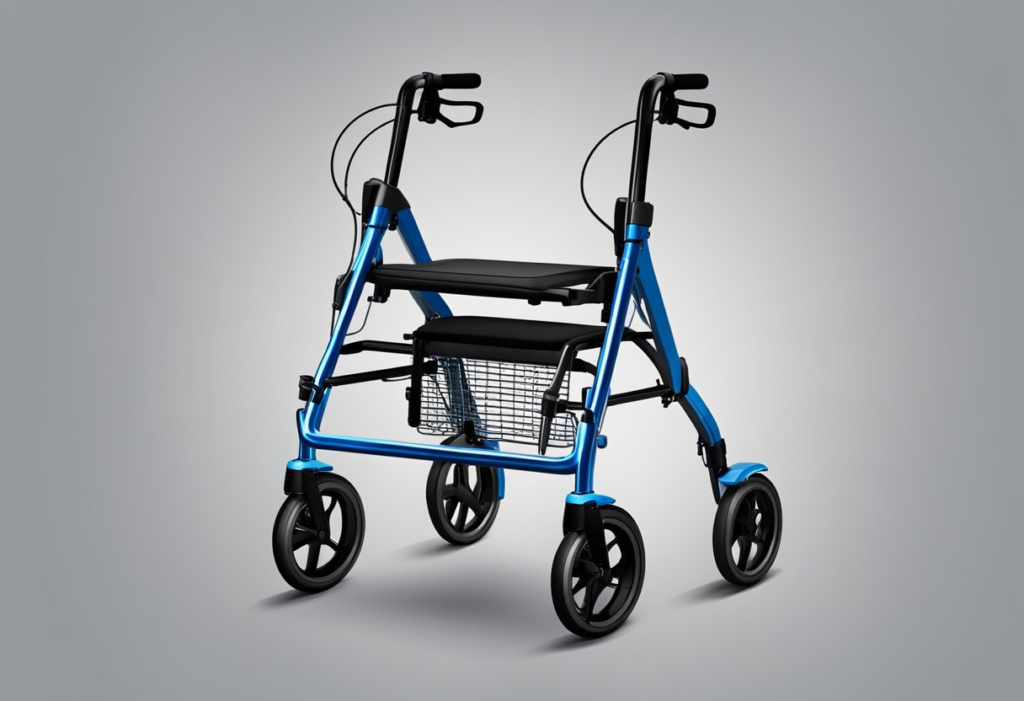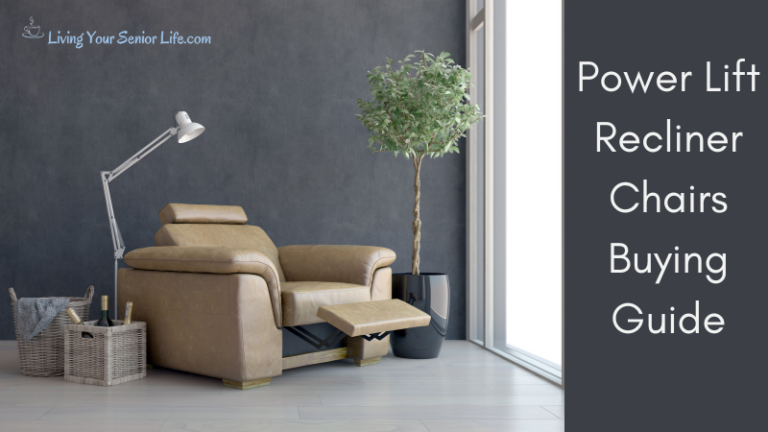Upright walkers are a relatively new type of mobility aid that can be a game-changer for those who have trouble walking or standing for extended periods. Unlike traditional walkers, upright walkers allow you to maintain an upright posture while walking, which can help reduce strain on your back and neck. In this article, we’ll take a closer look at what upright walkers are, how they differ from traditional walkers, and the benefits of using one.
Key Takeaways:
- Upright walkers are mobility aids designed to help seniors and people with disabilities maintain their independence and mobility.
- Unlike traditional walkers, upright walkers allow users to stand up straight and walk with a more natural gait.
- They are typically equipped with wheels, hand brakes, and other features that make them easier to use and more comfortable than traditional walkers.
- When choosing an upright walker, consider factors such as user height, walker size and adjustability, weight capacity, and foldability.
What Exactly Is An Upright Walker?

An upright walker is a mobility aid that is designed to help seniors and people with disabilities maintain their independence and mobility. Unlike traditional walkers, which require the user to hunch over and lean forward, upright walkers allow users to stand up straight and walk with a more natural gait. They are typically equipped with wheels, hand brakes, and other features that make them easier to use and more comfortable than traditional walkers.
Understanding Upright Walkers
If you’re looking for a mobility aid that can provide you with the independence and upright posture you need, an upright walker might be just what you’re looking for. Upright walkers, also known as upwalkers and stand upright walkers, are designed to help you maintain an upright posture while walking, which can be especially helpful if you have back pain or other mobility issues.
One of the key benefits of an upright walker is that it can help you maintain your independence. With an upright walker, you can move around more easily and without the need for assistance from others. This can be especially important if you want to maintain your independence and stay active as you age.
Upright walkers are also designed to be easy to use. They typically have four wheels and a handlebar that you can use to steer the walker as you move. Some models also come with additional features, such as a seat or a basket, which can be useful for carrying items or taking a break when you need to.
Video: What Is An Upright Walker?
How Does An Upright Walker Differ From a Conventional Walker?

If you’re considering a walker to help you with mobility, you may be wondering what the differences are between a conventional walker and an upright walker. Here are a few key differences to consider:
Design
A conventional walker typically has a basic design with four legs and no wheels, providing stability and support while walking. An upright walker, on the other hand, is designed to be more ergonomic and comfortable to use. It typically has a more modern design with two or four wheels, a padded seat, and a backrest.
Posture
One of the main benefits of an upright walker is that it encourages better posture while walking. With a conventional walker, you may tend to hunch over or lean forward, which can put strain on your back and neck. An upright walker is designed to keep you in an upright position, which can help reduce strain on your joints and muscles.
Maneuverability
Another key difference is maneuverability. A conventional walker can be difficult to maneuver in tight spaces, such as narrow hallways or doorways. An upright walker, on the other hand, is designed to be more maneuverable, with smaller wheels and a more compact design.
Weight Capacity
Finally, it’s important to consider weight capacity. Conventional walkers typically have a weight capacity of around 250-300 pounds, while upright walkers can often support up to 400 pounds or more. This makes them a better option for larger individuals who need extra support and stability while walking.
What Are The Benefits Of Upright Walkers?
If you are looking for a mobility aid that can help you walk safely and comfortably, an upright walker might be the perfect solution for you. Here are some of the benefits of using an upright walker:
Posture
Using an upright walker can help you maintain good posture while walking. Unlike traditional walkers that require you to hunch over, upright walkers allow you to stand up straight and walk with ease. This can help reduce strain on your back and neck and improve your overall posture.
Comfort
Upright walkers are designed to provide maximum comfort while walking. They come with padded handgrips and adjustable height settings, which can be customized to your specific needs. This can help reduce the risk of developing blisters or calluses and make walking a more enjoyable experience.
Stability and Safety
Upright walkers are designed to provide maximum stability and safety while walking. They come with four wheels and a sturdy frame, which can help prevent falls and provide a secure base of support. This can be especially helpful if you have balance issues or are recovering from an injury.
Pain Relief
Upright walkers can also provide pain relief for those who suffer from back pain or arthritis. By allowing you to stand up straight and walk with ease, upright walkers can help reduce the strain on your joints and muscles and alleviate pain and discomfort.
Confidence and Endurance
Using an upright walker can also help boost your confidence and endurance. By providing a secure base of support, upright walkers can help you walk further and for longer periods of time. This can help improve your overall mobility and independence, and allow you to enjoy more activities with friends and family.
Types of Upright Walkers
When it comes to upright walkers, there are several types available in the market to choose from. Each type has its own unique features and benefits. Here are some of the most common types of upright walkers:
Rollator Walker

The rollator walker is another popular type of upright walker. It comes equipped with four wheels, a seat, and hand brakes. This type of walker is best suited for individuals who require some level of mobility assistance but still want to maintain their independence. The rollator walker is also very versatile and can be used both indoors and outdoors.
Forearm Support Walker
The forearm support walker is a type of upright walker that provides additional support to the user’s forearms. This type of walker is best suited for individuals who have limited hand strength or mobility. The forearm support walker is also very stable and can help reduce the risk of falls.
Rolling Walker
The rolling walker is a type of upright walker that comes equipped with four wheels and a seat. It is similar to the rollator walker but is designed for individuals who require more support and stability. The rolling walker is also very easy to maneuver and can be used both indoors and outdoors.
Key Features To Consider
Before choosing an upright walker, it is important to consult with your doctor or physical therapist to determine if it is the right mobility aid for you. They can also advise on the specific features that your walker should have based on your medical condition.
Upright walkers are a great mobility aid for those who need extra support while walking. These walkers come with a range of features that make them a great choice for many people.
Here are some key features you should look for when choosing an upright walker:
Adjustable Height
The height of an upright walker is an important factor to consider, as it should be adjusted to your specific needs. Most upright walkers come with adjustable height settings, which allow you to find the perfect height for your comfort and safety.
Armrests
Armrests can provide extra support and stability when using an upright walker. Padded armrests keep your forearms at a natural level, which will relieve painful stress on the shoulders and back.
Cup Holder
A cup holder can be a convenient feature when you’re out and about with your walker. Look for a walker with a cup holder that is easy to access and can hold your drink securely.
Foldable
A foldable upright walker can be a great choice if you need to transport it frequently. Look for a walker that is easy to fold and unfold, and that can be stored in a compact space.
Grip
A good grip is essential for safety and comfort when using an upright walker. Look for a walker with a comfortable grip that is easy to hold onto.
Hand Brakes
Hand brakes can give you more control over your walker and help prevent falls. Look for a walker with easy-to-use hand brakes that are within reach. The handgrip arm should be height adjustable so you get the perfect fit while walking.
Seat
Some upright walkers come with a seat. Having a comfortable seat comes in handy if you need to sit down and having comfortable back support with a backrest makes it even more comfortable when in the seated position. Padded seats can be found covered with fabric or vinyl. The best choice is more of a personal preference.
Storage Bag
A storage bag can be a convenient feature, allowing you to carry items with you while using your walker. Look for a walker with a storage bag that is easy to access and can hold the items you need.
Weight Capacity
Upright walkers come with different weight capacities, so it’s important to choose one that can support your weight. Look for a walker that can handle your weight comfortably and safely.
Wheels
Wheels on an upright walker can make it easier to move around, especially on uneven surfaces. Look for a walker with sturdy wheels that can handle the terrain you’ll be walking on. Also, swivel wheels make for easier steering and maneuvering in tight spaces.
Using Your Upright Walker Safely
When using an upright walker, it is important to prioritize safety to prevent falls or injuries. Here are some tips to help you use your walker safely:
Stability and Balance
Make sure your walker is adjusted to the right height and that the handgrips are at the same level as your wrists. This will help you maintain proper posture and balance while using your walker. Keep your feet shoulder-width apart and your weight evenly distributed on both feet.
Moving
When moving with your walker, take small steps and avoid rushing or sudden movements. Keep your back straight and your head up, looking forward. Use your arms to move the walker forward, and step into it with one foot at a time.
Falls
If you feel unsteady or off-balance, stop and take a break. Don’t try to catch yourself with the walker if you start to fall. Instead, use your arms to brace yourself against a nearby surface.
Elbow and Knee Support
Your elbows should be slightly bent when holding onto the walker, and your knees should be slightly bent when standing or walking. This will help you maintain balance and reduce strain on your joints.
Coordination
Using an upright walker requires coordination between your hands, arms, and legs. Practice moving slowly and deliberately to improve your coordination and reduce the risk of falls.
Shoes
Wear comfortable, supportive shoes with non-slip soles when using your walker. Avoid high heels, sandals, or shoes with open backs, as they can increase the risk of falls.
Maintaining Your Upright Walker
To ensure the longevity of your upright walker, it is important to maintain it properly. Here are some tips on how to keep your walker in top condition:
Cleaning
Regular cleaning is essential to keep your walker free from dirt and grime. You the manufacture’s instructions on how best to keep your walker clean. In general, you can use a damp cloth to wipe down the frame, seat, and handles. For stubborn stains, you can use a mild soap solution. Avoid using abrasive cleaners or solvents as they can damage the finish of your walker.
Care
Proper care can help prevent wear and tear on your walker. Make sure to inspect your walker regularly for any signs of damage or wear. Check the wheels, brakes, and handles for any loose parts or signs of wear. If you notice any problems, have them repaired immediately to prevent further damage.
Storage
When not in use, store your walker in a dry, cool place to prevent rust and corrosion. Avoid exposing your walker to direct sunlight or extreme temperatures as this can damage the frame and other components. You can also use a cover to protect your walker from dust and debris.
Lifetime Warranty
Many upright walkers come with a lifetime warranty. Make sure to read the warranty carefully and follow the manufacturer’s instructions for any repairs or replacements. Keep your warranty information in a safe place so you can access it easily if needed.
Upright Walkers for Different Environments
When choosing an upright walker, it’s important to consider the environment in which you’ll be using it. Different models are designed for different surfaces and terrains, so it’s important to choose the one that best fits your needs.
Indoor Upright Walkers
Indoor upright walkers are designed for use on flat, smooth surfaces such as hardwood floors or carpet. They are typically lightweight and compact, making them easy to maneuver in tight spaces. Some models even fold up for easy storage when not in use.
Outdoor Upright Walkers
Outdoor upright walkers are designed for use on uneven surfaces such as sidewalks, gravel paths, and grassy areas. They typically have larger wheels and a sturdier frame to provide stability on rough terrain. Some models even have built-in shock absorbers to help smooth out bumps in the road.
All-Terrain Upright Walkers
If you plan on using your upright walker on a variety of surfaces, an all-terrain model may be the best choice for you. These walkers are designed to handle everything from smooth indoor floors to rough outdoor terrain. They typically have larger wheels and a more rugged frame to provide stability on any surface.
Environmental Considerations
When choosing an upright walker, it’s also important to consider the environment in which you’ll be using it. If you plan on using your walker primarily outdoors, look for a model that is weather-resistant and has features such as a built-in sun shade or rain cover. If you’ll be using your walker in a crowded indoor environment, look for a model that is easy to maneuver and has a narrow frame to help you navigate through tight spaces.
Upright Walkers and Lifestyle
If you’re looking for a mobility aid that promotes an active lifestyle, an upright walker might be the perfect fit for you. Unlike traditional walkers, which require you to hunch over and shuffle your feet, upright walkers allow you to stand up straight and walk with a more natural gait. This can help reduce strain on your back, neck, and shoulders, making it easier to walk longer distances without getting tired.
Upright walkers are also lightweight and easy to maneuver, which makes them ideal for travel. Whether you’re exploring a new city or just running errands around town, an upright walker can help you move around with ease. Many models are also designed to fold up for easy storage and transportation, so you can take them with you wherever you go.
In addition to promoting mobility and freedom, upright walkers can also help you stay active and fit. Walking is a great form of exercise, and using an upright walker can help you maintain good posture and engage your core muscles as you move. Some models even come with built-in resistance bands or other fitness features to help you get a full-body workout while you walk.
Overall, if you’re looking for a mobility aid that can help you stay active and engaged with your surroundings, an upright walker might be the perfect choice for you. With their lightweight design, easy maneuverability, and fitness features, these walkers can help you maintain your independence and enjoy a more active lifestyle.
FAQs
How much do upright walkers cost and will insurance cover them?
The cost of an upright walker can vary depending on the model and features. Basic models can range from $150 to $300, while more advanced models can cost upwards of $500. It’s important to check with your insurance provider to see if they cover the cost of an upright walker. Some insurance plans may cover the cost partially or in full, while others may require a prescription from a healthcare provider.
Who is a good candidate for an upright walker?
Upright walkers are designed for individuals who require additional support and stability while walking. They may be a good option for those with balance issues, weakness in their legs or core, or who have difficulty walking for extended periods of time. It’s important to consult with your healthcare provider to determine if an upright walker is the right choice for you.
Are there any downsides to using an upright walker?
Like any mobility aid, there are potential downsides to using an upright walker. It may take some time to adjust to using it and you may experience some discomfort in your arms or shoulders at first. Additionally, upright walkers may not be suitable for individuals with certain medical conditions or disabilities. It’s important to consult with your healthcare provider before using an upright walker to ensure it’s the right choice for you.
Additional Reading
You might also be interested in reading: Rollator Walker Guide
Take Away
Upright walkers for seniors and people with disabilities who want to maintain their independence and mobility are an excellent choice. They are designed to be easy to use, comfortable, and safe, and they can help users maintain a more natural gait while walking. Whether you are recovering from an injury or dealing with a chronic condition, an upright walker can help you stay active and engaged in your daily life.
Do you have experience with using upright or traditional walkers? Please comment below.










